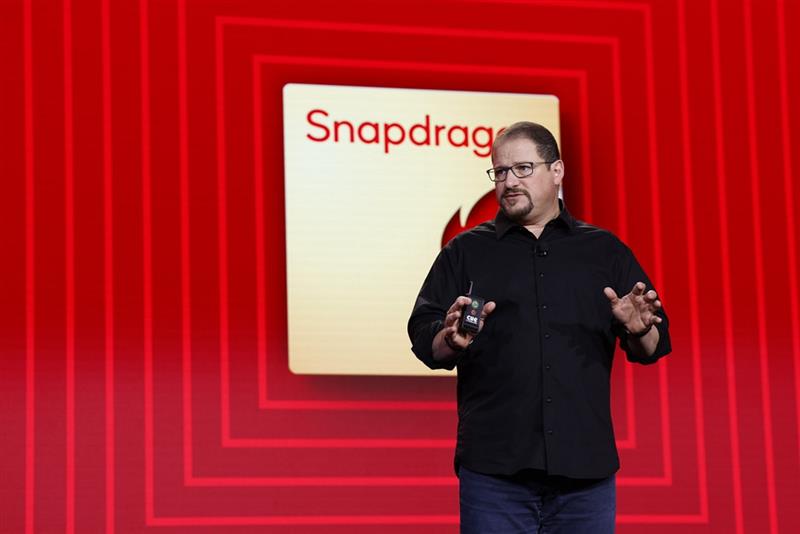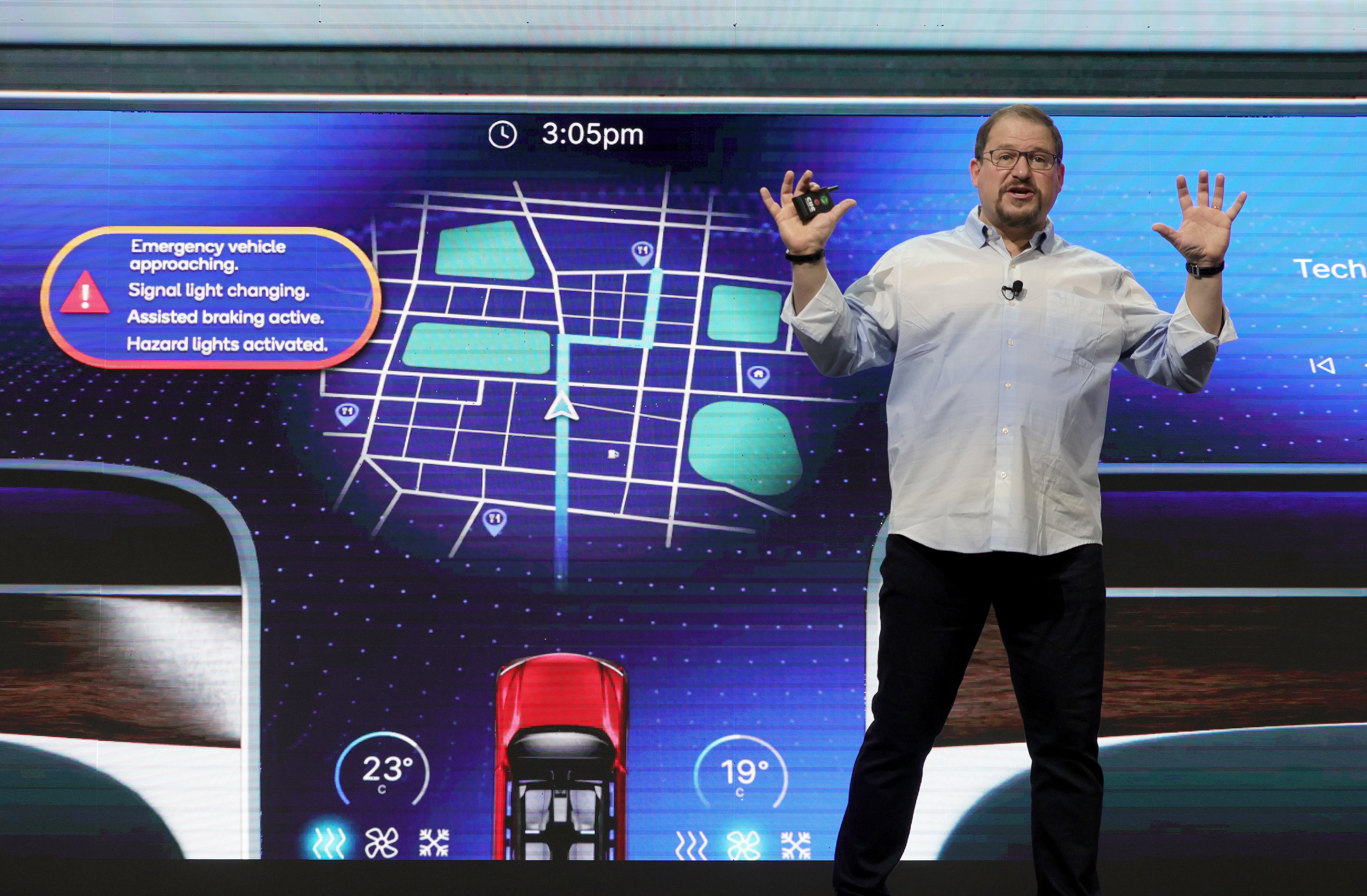Qualcomm CEO Cristiano Amon on the hidden technology powering your Android phone
The ‘Snapdragon’ processor probably powers the Android phone in your pocket, and might appear on your wrist and one day in your car – but is Qualcomm spreading itself too thin?

Your support helps us to tell the story
This election is still a dead heat, according to most polls. In a fight with such wafer-thin margins, we need reporters on the ground talking to the people Trump and Harris are courting. Your support allows us to keep sending journalists to the story.
The Independent is trusted by 27 million Americans from across the entire political spectrum every month. Unlike many other quality news outlets, we choose not to lock you out of our reporting and analysis with paywalls. But quality journalism must still be paid for.
Help us keep bring these critical stories to light. Your support makes all the difference.
If you have a premium Android phone, it probably has a Qualcomm processor at its heart. Well, unless you have a Samsung phone and you live in Europe, but even that’s about to change.
Talking exclusively to The Independent, Qualcomm CEO Cristiano Amon has revealed what it’s like to make the thing your smartphone can’t manage without.
Each year, Qualcomm holds what it calls the Snapdragon Summit in Hawaii. That’s because Qualcomm’s key chip brand is Snapdragon. This year, the main new processor was the Snapdragon 8 Generation 2 chipset. This will appear in upcoming smartphones like the OnePlus 11, Xiaomi 13 and Samsung Galaxy S23 series.
Samsung has been using Snapdragon chips in its US smartphones for a while, but has preferred its own Exynos chips in the phones it sells in Europe. But Samsung has now said that it will use Snapdragon in its phones on this side of the Atlantic, too, and it looks likely that its next flagship, the S23, will include it in Europe, too.
So, why is the new chip special and what does it do?
I meet Cristiano Amon in Maui on the summit’s second day. He is immaculately dressed in a perfectly-ironed off-white shirt, looking relaxed and comfortable, perhaps because of the stunning view of the ocean his hotel suite affords. Or perhaps it’s because this year’s summit has gone very well, announcing new features that the Snapdragon 8 Gen 2 can make happen, improving photography, enabling better audio, realising faster performance and more.
“One thing that is particularly interesting at this time for the Series 8 gen 2 is how pervasive artificial intelligence is becoming across all the experiences,” Amon explains. “Artificial intelligence is going to get scale when it happens in the edge, outside the data centre.” He’s referring to the Connected Intelligent Edge, that is, on devices like phones, tablets or headphones, for instance, instead of in big remote computer servers in the cloud.

“In the edge you have real time, contextual information. When we talk about the 5G modem, we talk about an intelligent 5G modem, that’s 5G plus AI. When we talk about our new camera it’s a cognitive camera with real-time AI processing. We talk about sound and everything else as coming with AI as it’s become pervasive.”
When it comes to artificial intelligence, or AI, it’s a buzzphrase you hear a lot. It’s often said as though the magic of it will dazzle you without you knowing anything about it. So, I ask Amon exactly what AI is and what it can do. His reply, the most accessible definition of AI I’ve yet heard, comes with plenty of examples.
“AI, you know, is broadly used and means different things. I’ll give you some examples of how AI works at the edge across different industries. So, you’re taking a photograph and say you have no light.” He points out of the window at that magnificent ocean view. “So, as you take the photograph, the AI knows that water is blue, that the sky is blue, that those trees are green and all of a sudden you have a photo that looks like it’s daylight, but you took it with no light. That’s an example of AI in real time learning from other people, who took different photos, so it can use artificial intelligence to improve low light photography.
“Let me give another example, using connectivity. As you go to a familiar place, the phone is learning that maybe that in some particular spots you have a bad cellular signal. So, it jacks up the power to compensate for that, or knows when you need it to switch from Wi-Fi to cellular and back.”
Then there’s security. “If all of a sudden your phone sends an SMS but you didn’t open the SMS app, you didn’t type anything, then the AI knows this is a probably a security event that it needs to flag. There are countless examples. There’s a lot of people to talk about AI but they don’t know what it is.” He pauses for a second, and adds, “It’s like gluten.”
The new Snapdragon 8 Gen 2 uses AI a lot often with striking results. For instance, a phone with the new chip in it can have an “always sensing camera”. This means that if you point the phone camera at a QR code, even with the phone in standby mode, it will automatically recognise a code and respond accordingly.

But, here’s the thing, the ubiquity of Qualcomm’s processor could be double-edged. After all, Apple makes its own chips, each one perfectly optimised for the iPhone, for instance. The processor dovetails seamlessly with Apple’s bespoke software. But Snapdragon 8 Gen 2 will need to work on smartphones built by different companies, from Samsung to Sony, Xiaomi to Motorola. How does Qualcomm create a chip that is everything to everybody?
“In the history of computing we have always seen the competition of two models. One model was the vertical model. The other model was the open compute, horizontal platform. The Macintosh, that’s vertical and there is the Microsoft/Intel open, horizontal compute platform for Windows. In phones it’s the same thing. You have the vertical model, that’s the iPhone, and you have the Qualcomm Android horizontal open platform and that’s where you see Samsung, Vivo, OnePlus, Honor, Motorola and so forth. Our strategy has always been to provide the open horizontal platform, whether that’s for PCs, phones or automobiles. And that’s why one of the things that Qualcomm does very well. We’re more than a chip company. We create ecosystems, we create new standards and the ability to bring ecosystems or partners together. And that’s what we do with Snapdragon.”
Qualcomm has certainly pulled off quite a trick here. Most phone owners don’t really take notice of what chip powers their phone, headphones, tablet or whatever. But a lot of Android phone users want the latest Snapdragon chip, something that Amon realised was key to Qualcomm, which he describes as basically “a corporate brand.”
“We have a very mature smartphone society. The phone is our most inseparable device and people want to know what is the technology that is behind that screen. The interesting phenomenon is we see this resonate with our customers. So, if you go and you look at the launch of some of our customers’ products, especially in China, Sometimes the Snapdragon logo is bigger than the phone maker’s own logo in their advertising. We don’t have to put a sticker on a laptop to say this is what’s inside; customers know.”
So, is it difficult, I wonder, when Qualcomm devises advanced processors capable of remarkable things and companies put the processors in their phones, emblazon them with Snapdragon logos but don’t employ the new features the silicon makes possible. Amon says, “When we announce chips, we now have a developer kit that goes to developers. In the past we would have a new chip and a manufacturer would build the phone. Then, much later, a developer would get hold of that phone and develop an app for it. Now, for the first time, as we release a chip, we’re giving a developer kit to developers so they can know, even before the phones come to market, what the technologies so they can take advantage of that in their apps. I think that that’s a very important change.”
Qualcomm is developing chips for different platforms, such as PCs and even cars. Is Qualcomm spreading itself too thin?
“We drive the innovation road map of every wireless technology, because we believe that last mile connectivity is wireless. So ,whether it’s wifi or cellular, It’s about everything being wireless-connected. What is fascinating about the journey that we are on, one of growth and diversification, is that was we develop technologies, we are also able to apply it to cars, to industrial internet of things, to computers.”
The company is demonstrating a highly effective noise cancellation technology so that if, say, you’re on a Teams call and the person next to you is eating a bag of crisps, with the touch of a button the snacking is silenced but your voice is still audible. And this feature, which is AI-based, can be implemented in multiple platforms, from phones to PCs to cars.
And, in a parting shot, Amon thinks auto technology is a big growth area. “With safety aspects. I think it’s possible to get to zero-crash when you think of all of those different technologies going to assistive driving.” That’s an intriguing thought. AI is certainly key to the message, but there’s another one underlying it: that it’s Qualcomm’s versatility and increasing success in different kinds of technology, that keeps the company at the forefront of what it does.
Join our commenting forum
Join thought-provoking conversations, follow other Independent readers and see their replies
Comments